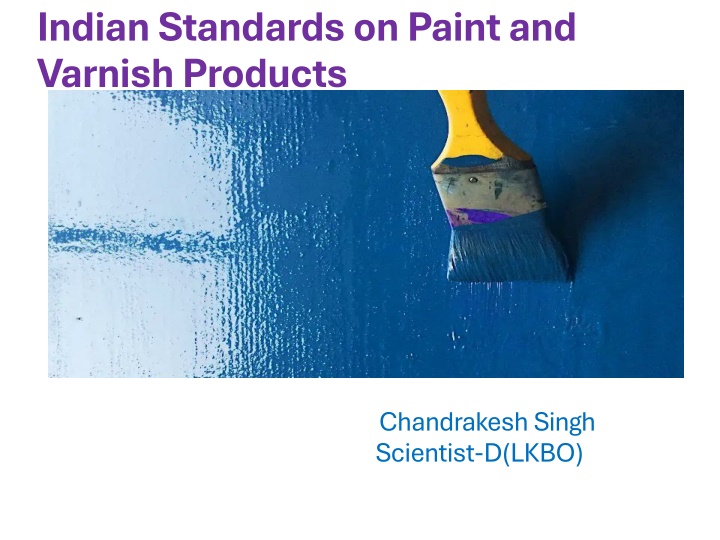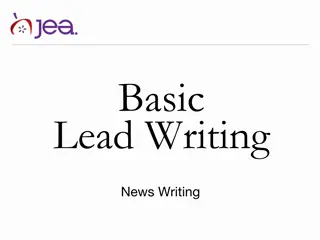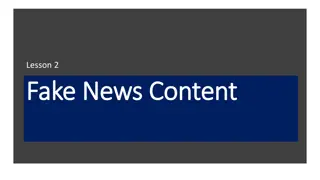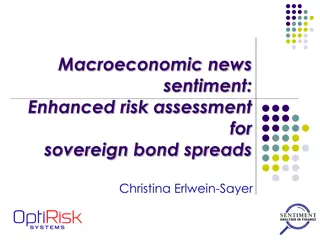
Indian Standards on Paint and Varnish Products Overview
Explore the Indian standards on paint and varnish products including the importance, components, types of paints like oil-based paints, and specific standards for various applications. Learn about pigments, binders, solvents, and additives essential in paint manufacturing. Discover the key characteristics and uses of oil-based paints as per Indian standards IS 1303, IS 8662, IS 133, and IS 2932.
Download Presentation

Please find below an Image/Link to download the presentation.
The content on the website is provided AS IS for your information and personal use only. It may not be sold, licensed, or shared on other websites without obtaining consent from the author. If you encounter any issues during the download, it is possible that the publisher has removed the file from their server.
You are allowed to download the files provided on this website for personal or commercial use, subject to the condition that they are used lawfully. All files are the property of their respective owners.
The content on the website is provided AS IS for your information and personal use only. It may not be sold, licensed, or shared on other websites without obtaining consent from the author.
E N D
Presentation Transcript
Indian Standards on Paint and Varnish Products Chandrakesh Singh Scientist-D(LKBO)
Introduction Paints Overview of their importance in protection and decoration. and Varnishes: Objective: types, testing methods, and standards. Understanding
Components of Paint-(Ref IS 1303 GLOSSARY OF TERMS RELATING TO PAINTS ) Pigments: Material, usually a fine powder, which is insoluble in paint media and which is used because of its optical, protective and decorative properties. In modern uses the term is often used to include extenders, as well as the White or coloured pigments. Provide color and opacity.(As per IS 1303) Organic Pigments: Derived from carbon-based molecules. Inorganic Pigments: Made from mineral compounds. Binders: The non-volatile portion of the Vehicle of a paint. It binds or cements the pigment particles together and the paint film as a whole to the material to which it is applied .(As per IS 1303). Form the film that adheres to the surface. Types: Alkyd, acrylic, epoxy, polyurethane.
Components of Paint-(Ref IS 1303 GLOSSARY OF TERMS RELATING TO PAINTS ) Solvents: Liquids, usually volatile, which are used in the manufacture of paint, to dissolve or disperse the film- forming constituents, and which evaporate during drying, and therefore do not become a part of the dried film. They are used to control the consistency and character of the finish and to regulate application properties. Types: Water, organic solvents (e.g., turpentine, mineral spirits). Additives: Enhance performance and application properties. Examples: Anti-settling agents(A substance incorporated in paint to keep pigment in suspension, thus delaying sedimentation during storage. ), anti-foaming agents, UV stabilizers.
Types of Paints - Oil-Based Paints As per IS 1303 -A paint that contains drying oil or oil varnish as the basic vehicle ingredient. Key Characteristics: Durable: Forms a hard, protective film; ideal for high-traffic areas. Smooth Finish: Provides a glossy, smooth, and professional appearance. Long Drying Time: Requires extended drying time; ideal for detailed work. Strong Odor: Contains volatile organic compounds (VOCs) that emit a strong smell. Water Resistance: Excellent resistance to water and wear; suitable for outdoor applications.
Types of Paints - Oil-Based Paints IS 8662: Paint, Air-Drying, Red Oxide Zinc Chrome, Priming Specifies the requirements for an oil-based, air-drying paint used primarily as a primer on iron and steel surfaces. IS 133: Enamel, Interior (a) Undercoating, (b) Finishing, Color as Required This standard specifies requirements for oil-based enamel paints used for interior applications. IS 2932: Enamel, Synthetic, Exterior (a) Undercoating, (b) Finishing Specifies the requirements for synthetic enamel paints based on oil-modified alkyds used for exterior surfaces. IS 2933: Enamel, Interior, (a) Undercoating, (b) Finishing, Color as Required Focuses on synthetic enamel paints suitable for interior surfaces, including the quality and composition of oil-based components.
Types of Paints - Water-Based Paints(Emulsion Paints) As per IS 1303 - A paint that contains a water emulsion or dispersion as the vehicle. Characteristics: Compounds). Low VOCs (Volatile Organic Examples: IS 15489:2004 - Water-Based Cement Paint Specification Specifies the requirements and methods of sampling and testing for water-based cement paint, which is used for exterior and interior surfaces. IS 5411(Part 1): Plastic Emulsion Paints for Interior Use Specification Specifies requirements for water-based emulsion paints used for interior wall applications. These paints are made using synthetic polymers dispersed in water. IS 15426:2004 - Acrylic Emulsion Paints for Exterior Use Specification This standard defines the specifications for acrylic emulsion paints that are used for exterior surfaces. It ensures weather resistance, durability, and color retention for external applications.
Types of Paints - Acrylic Paints As per IS 1303 Acrylic resin - Synthetic resin resulting from the polymerization of derivatives of acrylic acid or methacrylic acid, for example, esters, nitriles, amides, etc. Examples: IS 5411 (Part 1- Plastic Emulsion Paints for Interior Use Specification Although primarily about emulsion paints, this standard also applies to acrylic emulsion paints for interior use. It specifies requirements such as color, finish, opacity, and washability, focusing on the performance of the paint in indoor environments. IS 15489:2004 - Water-Based Cement Paint Specification While this standard is for water-based cement paint, it includes comparisons with acrylic-based applications, particularly for outdoor surfaces requiring enhanced resistance to weather and water. IS 133:2013 - Enamel, Interior (a) Undercoating, (b) Finishing, Colour as Required This standard covers specifications for interior enamel paints but also includes guidelines relevant to acrylic-modified enamels, which provide a durable and glossy finish. Composition: Acrylic polymer emulsion as the binder. Characteristics: Flexible and resistant to cracking. UV-resistant, retaining color better over time. Quick drying. formulations for specific
Types of Paints - Epoxy Paints A paint based on epoxy resin. Epoxy resin - A synthetic resin containing epoxide groups and in which a final polymer is formed as a result of reaction taking place substantially at the epoxide groups. A common type is the resin made from epichlorohydrin and bisphenol A. ( Ref IS 1303) IS 14209:1994 - Epoxy Paint for Steel Structures Specification Specifies the requirements for epoxy paints used on steel structures. This standard includes specifications for the composition, physical properties, and performance of epoxy paints intended for protective coatings on steel surfaces. The standard ensures that the paint provides adequate protection against corrosion, chemicals, and environmental factors. This material is expected to have adhesion on inorganic zinc coating and epoxy-primers, high toughness and abrasion resistance. This material is used as a finish coat for the painting of steel plant equipment where protection to salt water, chemicals, mineral oils, solvents and resistance to moisture protection under marine conditions are required.
Specialty Paints Anti-Corrosion Paints: Formulated to protect metal surfaces from rust. IS 14946:2001 ZINC ETHYL SILICATE PRIMER Zinc rich primers find a wide range of applications for corrosion protection of iron and steel. These can be used alone but are usually employed as a primer coat as a part of the protective system for long term corrosion - protection. This material shall be used for the painting of steel paint equipments, by spraying, where protection, chemical under marine atmospheric condition, abrasion and heat resistance are required. corrosion resistance
Specialty Paints Heat Resistant Paints: As per IS 1303 A paint with improved resistance to heat. IS 13183 : 1991: Aluminium paint, heat resistant Specification: Paint complying with this standard is intended for interior and exterior use on metal surfaces that may be subjected to temperature up to 600 C. The paint is intended for use on gasoline, diesel and steam engines, steam turbines, pumps etc and interior structural members of boilers and boiler houses. This standard prescribes the requirements, methods of sampling and test for the heat-resistant Aluminium Paint. The material will be used as a finishing heat resistant paint for chimneys, stacks, boiler, pipes and furnace structures where protection to moderate corrosive marine and industrial environment and heat resistance are required. IS 158 Ready mixed paint, brushing, bituminous, black, acid, alkali and heat resisting - Specification (Fourth Revision) This standard prescribes requirements and methods of sampling and test for ready mixed paint, brushing, bituminous, black, acid, alkali and heat resisting. The material is used for the protection of funnels, boilers, apparatus and appliances connected with ammunition.
Specialty Paints Fire-Retardant Paints:Slow down the spread of flames. IS 17044 Intumescent fire retardant paint (Water Based) Specification The intumescent fire retardant paint has got a unique place in fire safety for its role as fire retardant and protection of structural substrates. It is used in internal areas of different structures requiring fire protection. This paint, when exposed to fire, forms a cellular carbonaceous char, 70-80 times thicker to its original thickness which provides heat insulation and also acts as an oxygen barrier thus preventing ignition of combustible substrate materials. The coating also helps in maintaining mechanical integrity of light alloy metallic structures, in view of heat insulation property of thick char produced during fire. Intumescent fire retardant paint is a water based single pack system and should be mixed thoroughly before use. The paint is intended to be suitable for application by brush or by airless spray to provide uniform coating. A two coat system is recommended for protection of wood/plywood, electrical cables, aluminium and other polymeric materials. This paint can be applied directly over wood/plywood substrates and on electrical cables after surface preparation. However, metallic substrates require suitable primers before application of intumescent paint. Composition Intumescent fire retardant paint comprises of vinyl acetate acrylic co-polymer emulsion, intumescence agents and pigments. Ammonium polyphosphate, pentaerythritol, dicyandiamide are used as intumescence agents and titanium dioxide as pigment, where as vinyl acetate acrylic co-polymer is used as a binder. Phosphorus content in the pigment, when determined in accordance with the method prescribed in Annex C shall not be less than 20 percent by mass.
Varnishes Varnish - composition based essentially on resins and organic solvents, with or without a drying oil. Types: a) Lacquers - Those which usually form on evaporation of solvents. b) Air-drying varnishes - Those which usually form films polymerization or by any other chemical reaction at room temperature. c) Staving varnishes - Those which form films by chemical reaction on application of heat at specified temperature.(Ref IS 1303) A transparent coating by oxidation, time and
Testing(IS 101 Methods of sampling and test for paints, varnishes, and related products) Part 1: Test on liquid paints (general and physical) Part 2: Tests on liquid paints (chemical examination) Part 3: Tests on Paint Film Formation Section 1: Sampling Section 1: water content Section 1: drying time Section examination and preparation of samples for testing 2: preliminary Section 2: volatile matter Section 2: Film thickness Section 3: preparation of panels Section compound Difference method 3: volatile (VOC) organic content- Section 4: finish Section 4: brushing test Section compound voc and or semi volatile organic compounds svoc content gas-chromatographic Section 5: volatile compound content of low-VOC emulsion paints 4: volatile organic Section 5: consistency organic
Part 4: optical test Part 5: mechanical test on paint films Part 6: Durability tests Section 1: opacity Section 1: hardness tests Section 1: resistance to humidity conditions condensation under of Section 2: colour-visual comparison of colour of paints Section 2: Flexibility and adhesion Section properties 2: keeping Section 3: light fastness test Section resistance 3: impact Section vapour permeability 3: moisture Section 4: gloss Section 4: Print free test Section 4: Degradation of coatings Section resistance 5: Impact Section 5: accelerated weathering test
Part 7: environmental tests on paint films Part 8: tests for pigments and other solids Section 1: residue on sieve Section 2: pigments and non - volatile matter Section 3: ash content Part 9: tests for lacquers and varnish Section 1: acid value Section 2: rosin test Section 1: resistance to water Section 2: resistance to liquids Section 3: Determination of the effect of heat Section 4: resistance to bleeding of pigments Section4 : phthalic anhydride Section 5 : lead restriction
Physical Testing of Paints Viscosity: Importance: Determines flow and application properties. Methods: Flow cup, Brookfield viscometer. Standards: IS 101 (Part 1/Sec 5). Density: Importance: Mass per unit volume, affects coverage. Methods: Pycnometer. Standards: IS 101 (Part 1/Sec 7). Flash Point: Importance: Prescribes a test and determination of flash point by closed cup equilibrium method. Methods: Heating of sample in closed cup. Standards: IS 101 (Part 1/Sec 6). Gloss: Importance: Reflectivity of surface, aesthetic property. Methods: Gloss meter at 20 , 60 , 85 . Standards: IS 101 (Part 4/Sec 4).
Performance Testing of Paints Adhesion: Importance: Measures bond strength to substrate. Methods: a) Bend test, b) Scratch hardness test, c) Cupping test, and d) Pull off test. Standards: IS 101 (Part 5/Sec 2). Durability: Importance: Impact resistance Methods: evaluating the resistance of a dry film of paint, varnish or related product to cracking or peeling from a substrate when it is subjected to a deformation caused by a falling weight Standards: IS 101 (Part 5/Sec 3). Hardness tests: Importance: quality of the coating of metal parts. Methods: a) Pendulum test, b) Indentation test, c) Pencil hardness test, and d) Pressure test. Standards: IS 101 (Part 5/Sec 1).
Chemical Testing of Paints Water content: Importance: Quality andconsistency Methods: Dean and Stark method and the Karl Fischer (Direct Electrometric Titration) method Standards: IS 101 (Part 2/Sec 1). Chemical Resistance: Importance: Ensures durability against chemicals. Methods: Immersion and contact tests. Standards: IS 101 (Part 6/Sec 3). Volatile organic compound (Voc) content: Importance: VoC content may be poisonous and cause cancer and can also damage the environment by colliding with air gases. Methods: GC Method. Standards: IS 101 (Part 2/Sec 4).
Resistance to liquids Importance: Testing the resistance to liquids in paints is crucial because it determines how well the paint can withstand exposure to various substances, including water, chemicals, and oils. Test Method: Immersion in test liquid. Standards: IS 101 (Part 7/Sec 2).
Degradation of coatings Importance: Ability of a coating to resist avoid degradation . Measurement: the degree of flaking ( scaling ) and blistering, that may develop in the paint system, by comparison with photographic standards. Standards: IS 101 (Part 6/Sec 4).
Opacity Importance: Quantifies how effectively covers the surface Tests: Using Black and White Charts. Standards: IS 101 (Part 4/Sec 1). paint
Keeping properties Importance: Durability test Tests:prescribes method to determine the change in certain properties that may take place when packaged paint of either the solvent thinned or latex type is stored at normal room conditions. Standards: IS 101 (Part 6/Sec 2). the
BIS Standards for Paints and Varnishes: Overview of some standards.
IS 2932 Enamel, Synthetic, Exterior: (a) Undercoating (b) Finishing For synthetic enamel based products naturally occurred extenders/fillers are not used as a part of the constituents. So it is technologically feasible to formulate this product with very low maximum permissible limit of lead. Therefore, in this standard, lead restriction up to a maximum permissible limit of 90 ppm has been prescribed keeping in view to use this product for painting in houses and buildings. This is more so to prevent lead exposure of children and adults in consumer homes/residential premises and consequent adverse impact on human health and safety and also keeping in view of the further scope for exposure to children to the paint once dried. Composition: The material shall be based on synthetic alkyd resin, free from natural rosin or its derivatives or its modifications in any form when tested in accordance with IS 101 (Part 9/Sec 2). In case of disputes, the test is to be carried out as prescribed in Annex B. It shall be of such a composition so as to satisfy the requirements of this standard. Requirements: Adhesion, durability, gloss, Lead etc. Test Methods: Physical, performance, and chemical tests.
IS 101 Methods of Sampling and test for paints, Varnishes and Related products. Details: Sampling samples for testing. Physical Tests: Viscosity, density, fineness of grind. Performance Tests: Adhesion, flexibility, durability. Chemical Tests: pH, chemical resistance, solvent resistance. Procedures: Ensuring representative
IS Undercoating Specification Part 1 for household and decorative purposes. Details: This standard requirements and methods of sampling and test for enamel, interior, undercoating and finishing, colour as required. Requirements: Freedom from Coarse Particles :The paint shall be free from coarse aggregates, suspended particles of gel and foreign matter, when tested as per IS 101 (Part 1/Sec 2) Thinning Properties Lead Restriction: Shall be less than 90 PPM Drying Time, Opacity etc 133 Enamel, Interior Finishing : (a) (b) - prescribes
IS 168 Ready mixed paint, air drying, for general purpose- specification. In recognition of the substantial consequences of volatile organic compounds (VOC) on the environment and human health, this fifth revision has been taken up to limit the VOC content in paint products. This fifth revision aims to promote the usage of low VOC or VOC-free products, marking a significant step towards fostering a healthier and more sustainable environment. The ultimate goal of these measures is the complete elimination of VOC from paint products. Scope: This standard prescribes requirements and methods of sampling and test for ready mixed paint, air-drying, for general purposes, colour as required. The material is normally used for the protection of parts of apparatus, appliances, equipment, ammunition where air-drying is required. Requirements: Adhesion, drying time, durability, Gloss, Lead restriction etc. etc, connected with
IS 104 Specification for Ready mixed paint, brushing, zinc chrome, priming. Scope: This standard prescribes requirements and methods of sampling and test for the material commercially known as ready mixed paint, brushing, zinc chrome, priming, air drying. The material is used for the protection of aluminium and light alloys and may also be used for steel work. It may be used under marine and inland outdoor conditions. This product is extensively used for protection of aluminium and light alloys. There is also a tendency to use it for household purposes. However, lead pigment is an ingredient for manufacturing this paint. Keeping all this in view and also to minimize the adverse impact on the environment, the requirement of the maximum permissible limit of lead has been kept as 1,000 ppm. This is more so to prevent lead exposure to children and adults in consumer homes/residential premise Special Applications: High-performance requirements for harsh conditions. Performance requirements: Resistance to humidity, Drying, Flash Point.
IS 133 Enamel interior - undercoating and finishing Scope : This standard prescribes requirements and methods of sampling and test for enamel, interior, undercoating and finishing, colour as required. Naturally occurring extenders/fillers are not used as a part of the constituents of synthetic enamel-based products. It is technologically feasible to formulate this product with a very low lead content. Therefore, in this standard, lead restriction up to a maximum permissible limit of 90 ppm had been prescribed, so as to prevent lead exposure of children and adults and consequent adverse impact on human health and safety Performance Requirements: Resistance to water, color, consistency etc.
IS 2074. Ready Mixed Paint, Air Drying , Red Oxide Zinc Chrome, Priming Specification Scope: This requirements methods of sampling and test for the material commercially known as ready mixed paint, air drying, red oxide-zinc chrome priming. The material is used as a primer in the painting system normally followed for enamels for metal surfaces. It is used for the protection of steelwork for household and decorative purposes and also both under marine and inland outdoor conditions. This paint is not recommended to be used on household articles such as grills, shutters, metal furniture, LPG cylinder, etc, due to toxicity of chrome primer. It is recommended that proper precaution to application. Requirements: adhesion, Lead and durability. standard prescribes be taken during Rust prevention,
IS brushing, grey filler, for enamels for use over primers 110 Ready mixed paint, Scope: This standard prescribes the requirements, and the methods of sampling and test for ready mixed paint, brushing, grey filler, for enamels, for use over primers. The material is used as a filler over the primer in the painting system normally followed by enamels. Requirements: durability, Lead etc. Color, adhesion,






















